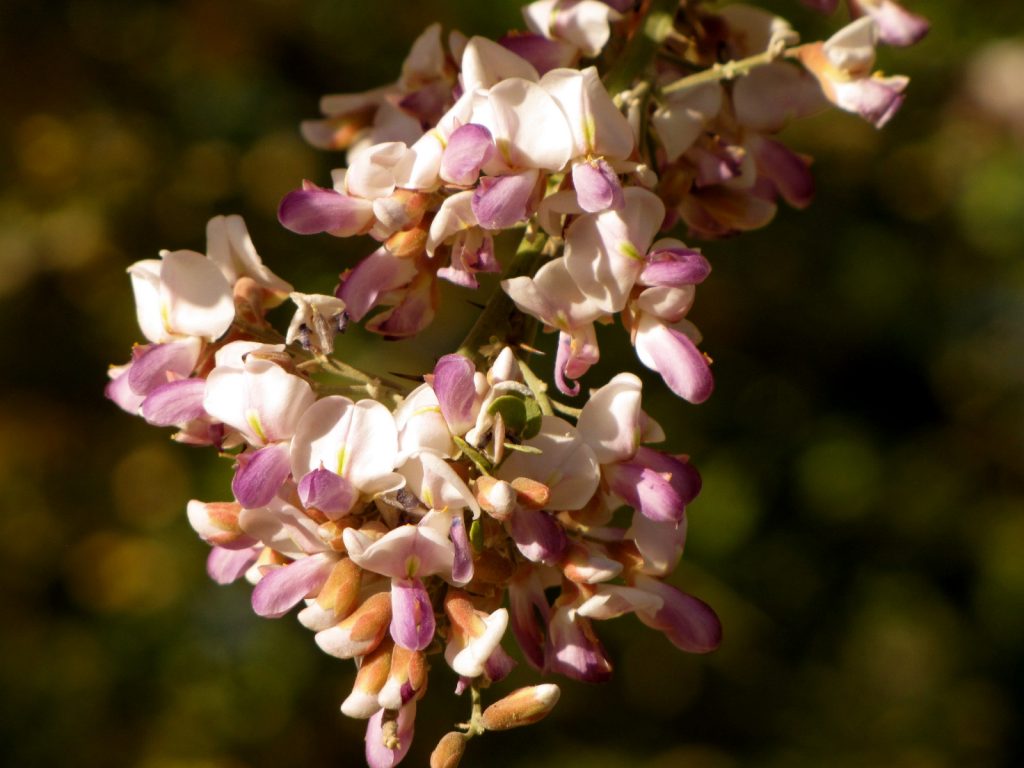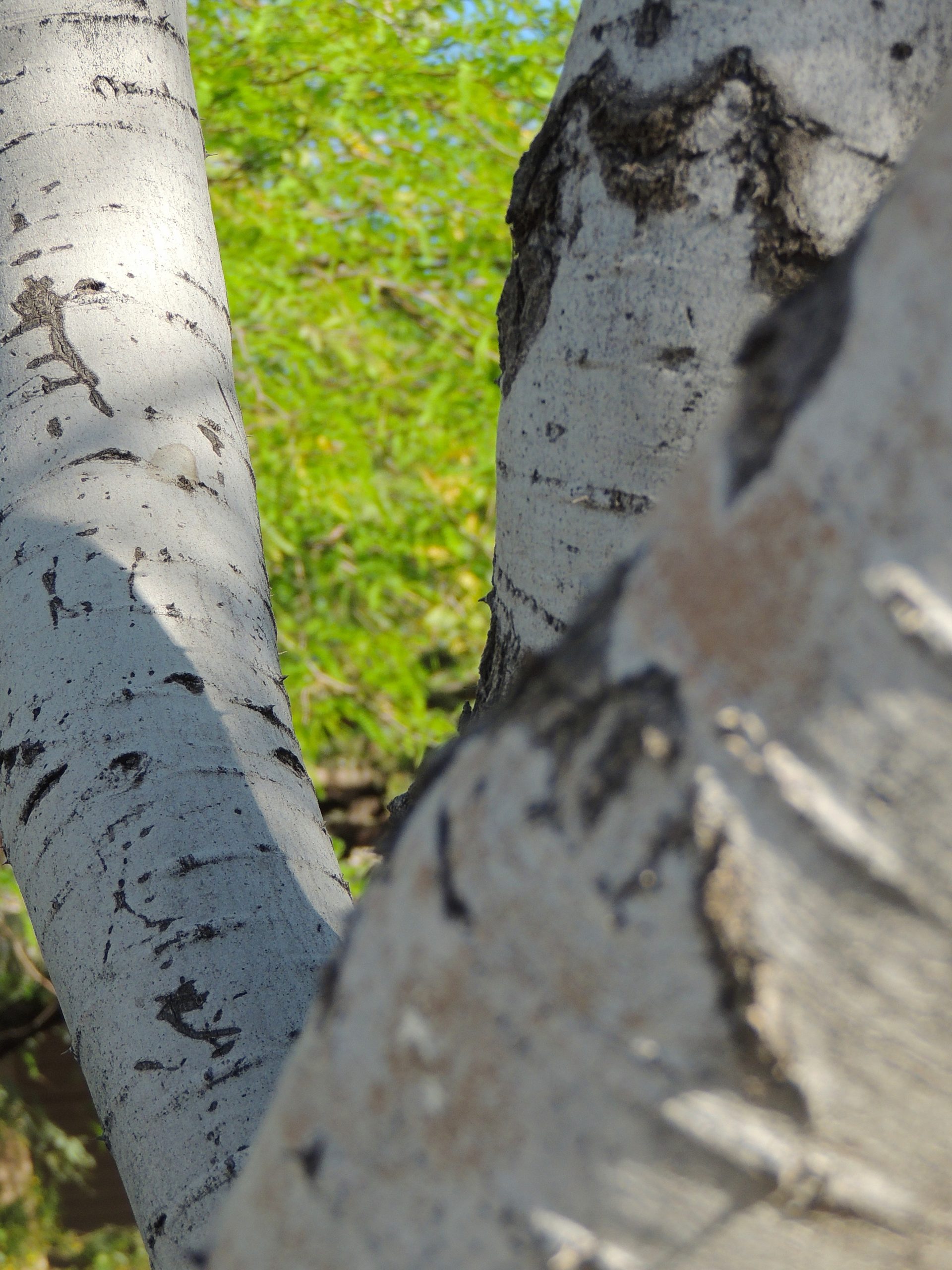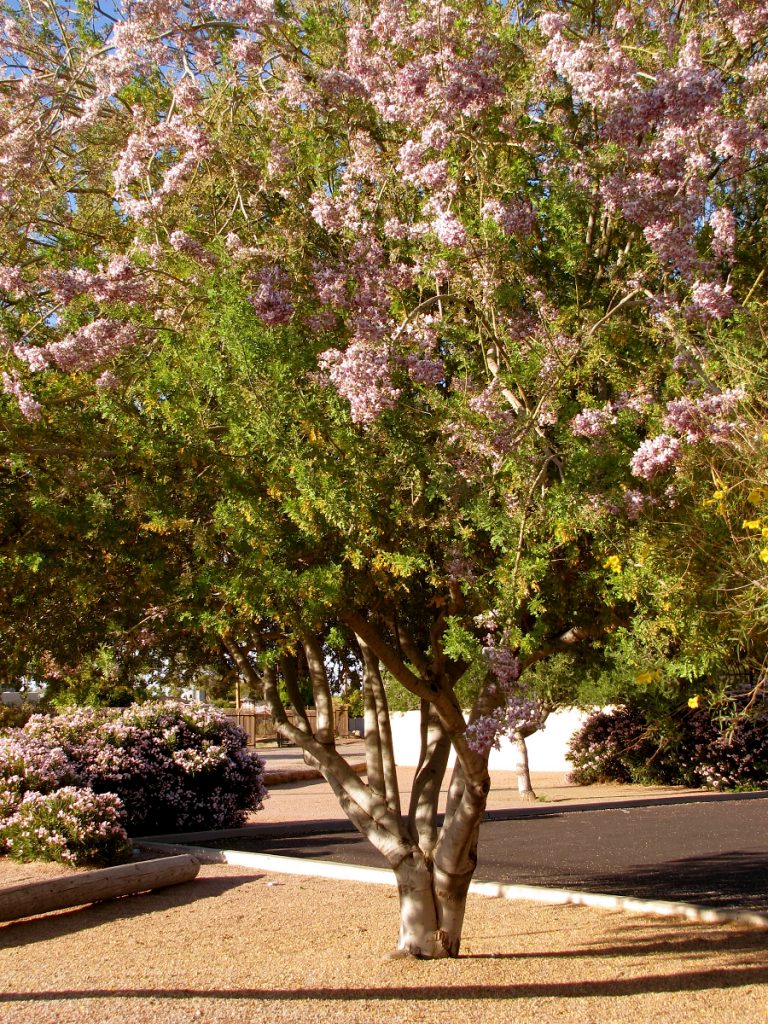Description As the common name suggests, Ironwood has hard, heavy wood. One cubic foot of the wood, valued for carving and firewood, weighs 66 pounds. Ironwood’s bark is light gray when young, turning darker with maturity. The gray-green foliage is evergreen except in extreme cold. The 2-inch-long, 1-inch-wide leaves are divided into oval leaflets to ½ inch long. Pairs of ½-inch, straight spines occur at each leaf base. The pinkish-lavender flowers are 1/3-inch-long and arranged in loose clusters. Ironwood blooms in May and June, though the intensity of flowering can vary from year to year. Two-inch-long brown pods develop from the flowers, containing edible seeds that taste somewhat like peanuts. Ironwood develops a thick, sometimes multiple-branched trunk. The branches grow upright at first then spread with age, even brushing the ground. The broad-crowned tree can reach 25 feet high with a similar spread.
Native Distribution Ironwood is common along washes and on rocky slopes in southern Arizona and southeastern California, and also in Baja California and Sonora, Mexico. It occurs at elevations below 2,500 feet.

Culture This tough desert tree can tolerate long periods of drought, although extra water a few times a month in the summer can increase the normally slow growth rate. Good drainage is preferred, as is full sun. The most important cultural requirement is protection from cold. Temperatures around 20 degrees Fahrenheit will damage foliage, and prolonged freezing can kill the tree. Ironwood’s natural character is very attractive; pruning should be limited to removal of dead branches. If the tree is used to shade a patio, low-hanging branches will need to be pruned for safety. Do heavy pruning only in the cooler months to avoid sunburn on newly exposed branches.

Landscape Use Whether planted along a wash in a naturalistic desert landscape or shading a formal patio, Ironwood is appropriate. It is usually the center of attention, yet it complements other desert plants well. Ironwood may seem an unlikely candidate for planting near a swimming pool, but its litter production is relatively light. In its natural, unpruned form, it could create a formidable security barrier or dense screen for visual control.
Did you know that up to 70 percent of water use is outdoors? That’s why we love desert plants and feature them each month. It’s still a great time to plant non-tropical plants in your landscape, and you can learn more about Ironwood and other plants on our Arizona Low-Water-Use Plants page. Visit our page on Choosing and Planting Low Water-Use Plants for tips on plant selection and how to plant properly. Also, be sure to read through all of our featured Plant of the Month blogs!
________________________________________________________________________________
From time to time, Water – Use It Wisely features guest bloggers who write about topics related to water and water conservation. Judy Mielke is a horticulturist, Landscape Architect and the author of one of Water – Use It Wisely’s favorite books. You can find plant descriptions like this and many more in her book Native Plants for Southwestern Landscapes.


